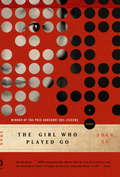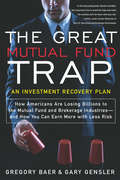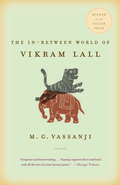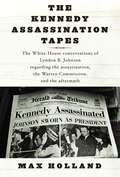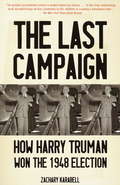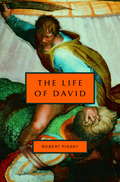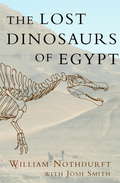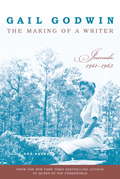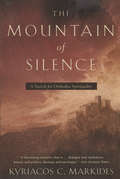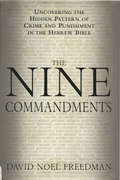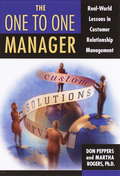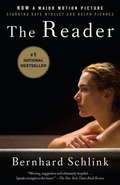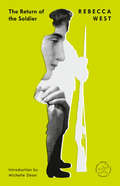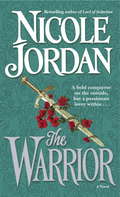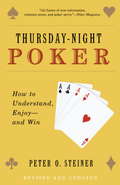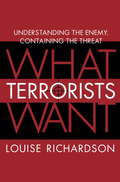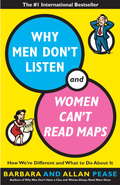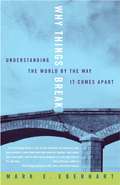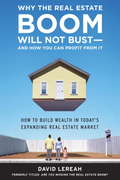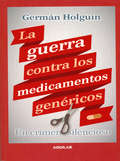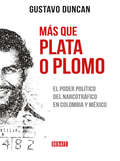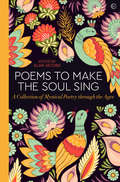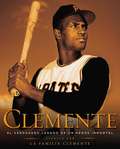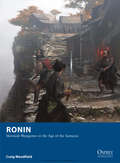- Table View
- List View
The Girl Who Played Go: A Novel
by Shan SaIn a remote Manchurian town in the 1930s, a sixteen-year-old girl is more concerned with intimations of her own womanhood than the escalating hostilities between her countrymen and their Japanese occupiers. While still a schoolgirl in braids, she takes her first lover, a dissident student. The more she understands of adult life, however, the more disdainful she is of its deceptions, and the more she loses herself in her one true passion: the ancient game of go. Incredibly for a teenager–and a girl at that–she dominates the games in her town. No opponent interests her until she is challenged by a stranger, who reveals himself to us as a Japanese soldier in disguise. They begin a game and continue it for days, rarely speaking but deeply moved by each other’s strategies. As the clash of their peoples becomes ever more desperate and inescapable, and as each one’s untold life begins to veer wildly off course, the girl and the soldier are absorbed by only one thing–the progress of their game, each move of which brings them closer to their shocking fate. In The Girl Who Played Go, Shan Sa has distilled the piercing emotions of adolescence into an engrossing, austerely beautiful story of love, cruelty and loss of innocence. From the Hardcover edition.
The Great Mutual Fund Trap
by Gregory Baer Gary GenslerConvinced that your star mutual fund manager will help you beat the market? Eager to hear the latest stock picking advice on CNBC? FORGET ABOUT IT!TheGreat Mutual Fund Trapshows that the average mutual fund consistently underperforms the market, and that strategies for pickingabove-averagefunds -- everything from past performance to expert rankings -- are useless. Picking individual stocks on the advice of brokers and analysts works no better. The only sure things are the fees and commissions you’ll pay. Fortunately, the news is not all bad. Investors willing to ignore the constant drumbeat of “trade frequently,” “trust the experts,” and “beat the market” now have the opportunity to do better. Using new investing products investors can earn higher returns with lower risks. Drawing on their years of Wall Street, Treasury and Federal Reserve experience, Gary Gensler and Gregory Baer offer a fresh and realistic look at how money is managed in America. From new indexing strategies to risk-managed stock selection,TheGreat Mutual Fund Trapoffers investors an escape from high costs and immunity from seductive marketing messages.
The In-Between World of Vikram Lall
by M. G. VassanjiDouble Giller Prize winner M. G. Vassanji’sThe In-Between World of Vikram Lallis a haunting novel of corruption and regret that brings to life the complexity and turbulence of Kenyan society in the last five decades. Rich in sensuous detail and historical insight, this is a powerful story of passionate betrayals and political violence, racial tension and the strictures of tradition, told in elegant, assured prose. The novel begins in 1953, with eight-year-old Vikram Lall a witness to the celebrations around the coronation of Queen Elizabeth II, just as the Mau Mau guerilla war for independence from Britain begins to gain strength. In a land torn apart by idealism, doubt, political upheaval and terrible acts of violence, Vic and his sister Deepa must find their place among a new generation. Neither colonists nor African, neither white nor black, the Indian brother and sister find themselves somewhere in between in their band of playmates: Bill and Annie, British children, and Njoroge, an African boy. These are the relationships that will shape the rest of their lives. We follow Vikram through the changes in East African society, the immense promise of the fifties and sixties. But when that hope is betrayed by the corruption and violence of the following decades, Vic is drawn into the Kenyatta government’s orbit of graft and power-broking. Njoroge, his childhood friend, can abandon neither the idealism of his youth nor his love for Vic’s sister Deepa. But neither the idealism of the one nor the passive cynicism of the other can avert the tragedies that await them. In interviews given when the novel was published, Vassanji commented thatThe In-Between World of Vikram Lallis the first of his books to deal with his memories of Kenya, where he spent the first 5 years of his life: “I remember these images of fear, of terror. And I thought I had to come back to that and see the whole Mau Mau episode from the Asian point of view. I had never written a book set in Kenya, where my father was from. And when I did, I just felt good about it, because I was going back to one part, one of many homes. ” The In-Between World of Vikram Lall, a compelling record in the voice of a character described as “a cheat of monstrous and reptilian cunning,” took three years to write. After research in Kenya and Britain, M. G. Vassanji devoted himself to the novel in a dark office at the University of Toronto. It was a hard process of creation and discovery, especially as Vassanji is an assiduous editor of his own work: “I come back to it over and over. For me, it’s like working on a sculpture. You sort of chip away a bit at a time until you tell yourself it’s as perfect as you can make it. ” Vassanji’s fifth novel met with immense Canadian and international success. As well as making him the first author to win the Giller Prize twice, the book was a #1 national bestseller. The In-Between World of Vikram Lallis a profound and careful examination of one man’s search for his place in the world; it also takes up themes that have run through Vassanji’s work, such as the nature of community in a volatile society, the relations between colony and colonizer, and the inescapable presence of the past. It is also, finally, a deeply personal book: “The major thing that stands out in the book is people who are in-between. The feeling of belonging and not belonging is very central to the book. And that also played out in my life. When we lived in Tanzania we belonged and did not belong because we had come from Kenya. That has been a major thread in my life. ” From the Hardcover edition.
The Kennedy Assassination Tapes
by Max HollandA major work of documentary history–the brilliantly edited and annotated transcripts, most of them never before published, of the presidential conversations of Lyndon B. Johnson regarding the Kennedy assassination and its aftermath. The transition from John F. Kennedy to Johnson was arguably the most wrenching and, ultimately, one of the most bitter in the nation’s history. As Johnson himself said later, “I took the oath, I became president. But for millions of Americans I was still illegitimate, a naked man with no presidential covering, a pretender to the throne…. The whole thing was almost unbearable. ” In this book, Max Holland, a leading authority on the assassination and longtime Washington journalist, presents the momentous telephone calls President Johnson made and received as he sought to stabilize the country and keep the government functioning in the wake of November 22, 1963. The transcripts begin on the day of the assassination, and reveal the often chaotic activity behind the scenes as a nation in shock struggled to come to terms with the momentous events. The transcripts illuminate Johnson’s relationship with Robert F. Kennedy, which flared instantly into animosity; the genuine warmth of his dealings with Jacqueline Kennedy; his contact with the FBI and CIA directors; and the advice he sought from friends and mentors as he wrestled with the painful transition. We eavesdrop on all the conversations–including those with leading journalists–that persuaded Johnson to abandon his initial plan to let Texas authorities investigate the assassination. Instead, we observe how he abruptly established a federal commission headed by a very reluctant chief justice of the Supreme Court, Earl Warren. We also learn how Johnson cajoled and drafted other prominent men–among them Senator Richard Russell (who detested Warren), Allen Dulles, John McCloy, and Gerald Ford–into serving. We see a sudden president under unimaginable pressure, contending with media frenzy and speculation on a worldwide scale. We witness the flow of inaccurate information–some of it from J. Edgar Hoover–amid rumors and theories about foreign involvement. And we glimpse Johnson addressing the mounting criticism of the Warren Commission after it released its still-controversial report in September 1964. The conversations rendered here are nearly verbatim, and have never been explained so thoroughly. No passages have been deleted except when they veered from the subject. Brought together with Holland’s commentaries, they make riveting, hugely revelatory reading.
The Last Campaign
by Zachary KarabellIn the presidential campaign of 1948, Americans had a choice across the ideological spectrum, from the far Right to the far Left. This account tells the story of all four candidates' campaigns, and argues that this was the last time a presidential race was dominated by radio and print media, and the last time that progressive and Left points of view were debated and covered in the mainstream press. The author has taught at Harvard, the University of Massachusetts, and Dartmouth. His essays have appeared in newspapers and national publications. Annotation c. Book News, Inc. , Portland, OR (booknews. com)
The Life of David
by Robert PinskyPoet, warrior, and king, David has loomed large in myth and legend through the centuries, and he continues to haunt our collective imagination, his flaws and inconsistencies making him the most approachable of biblical heroes. Robert Pinsky, former poet laureate of the United States, plumbs the depths of David’s life: his triumphs and his failures, his charm and his cruelty, his divine destiny and his human humiliations. Drawing on the biblical chronicle of David’s life as well as on the later commentaries and the Psalms——traditionally considered to be David’s own words——Pinsky teases apart the many strands of David’s story and reweaves them into a glorious narrative. Under the clarifying and captivating light of Pinsky’s erudition and imagination, and his mastery of image and expression, King David——both the man and the idea of the man——is brought brilliantly to life. From the Hardcover edition.
The Lost Dinosaurs of Egypt
by William Nothdurft Josh SmithThe date is January 11, 1911. A young German paleontologist, accompanied only by a guide, a cook, four camels, and a couple of camel drivers, reaches the lip of the vast Bahariya Depression after a long trek across the bleak plateau of the western desert of Egypt. The scientist, Ernst Freiherr Stromer von Reichenbach, hopes to find fossil evidence of early mammals. In this, he will be disappointed, for the rocks here will prove to be much older than he thinks. They are nearly a hundred million years old. Stromer is about to learn that he has walked into the age of the dinosaurs.At the bottom of the Bahariya Depression, Stromer will find the remains of four immense and entirely new dinosaurs, along with dozens of other unique specimens. But there will be reversals—shipments delayed for years by war, fossils shattered in transit, stunning personal and professional setbacks. Then, in a single cataclysmic night, all of his work will be destroyed and Ernst Stromer will slip into history and be forgotten.The date is January 11, 2000—eighty-nine years to the day after Stromer descended into Bahariya. Another young paleontologist, Ameri-can graduate student Josh Smith, has brought a team of fellow scientists to Egypt to find Stromer’s dinosaur graveyard and resurrect the German pioneer’s legacy. After weeks of digging, often under appalling conditions, they fail utterly at rediscovering any of Stromer’s dinosaur species.Then, just when they are about to declare defeat, Smith’s team discovers a dinosaur of such staggering immensity that it will stun the world of paleontology and make headlines around the globe.Masterfully weaving together history, science, and human drama, The Lost Dinosaurs of Egypt is the gripping account of not one but two of the twentieth century’s great expeditions of discovery.
The Making of a Writer
by Gail GodwinGail Godwin was twenty-four years old when she wrote: “I want to be everybody who is great; I want to create everything that has ever been created. ” It is a declaration that only a wildly ambitious young writer would make in the privacy of her journal. Now, inThe Making of a Writer, Godwin has distilled her early journals, which run from 1961 to 1963, to their brilliant and charming essence. She conveys the feverish period following the breakup of her first marriage; the fateful decision to move to Europe and the shock of her first encounters with Danish customs (and Danish men); the pleasures of soaking in the human drama on long rambles through the London streets and the torment of lonely Sundays spent wrestling these impressions into prose; and the determination to create despite rejection and a growing stack of debts. “I do not feel like a failure,” Godwin insists. “I will keep writing, harder than ever. ” Brimming with urgency and wit, Godwin’s inspiring tome opens a shining window into the life and craft of a great writer just coming into her own. “A generous gift from a much-loved author to her readers. ” –Chicago Sun-Times “Full of lively, entertaining observations on the literary life . . . [captures] the spirit of a young writer’s adventure into foreign lands and foreign realms of thought and creative endeavor. ” –The Atlanta Journal-Constitution “As cities and continents and men change, the entries are borne along by . . . the young Godwin’s fierce conviction that she is meant to write fiction and her desire to distract herself from this mission with any man who catches her eye. ” –The New York Times Book Review “[Godwin] describes a high-wire act of love and work. . . . She espouses fierce, uncompromising ideas about fiction. ” –Los Angeles Times “[Gail Godwin’s journals] are a gold mine. ” –The Boston Globe
The Mountain of Silence
by Kyriacos C. MarkidesAn acclaimed expert in Christian mysticism travels to a monastery high in the Trodos Mountains of Cyprus and offers a fascinating look at the Greek Orthodox approach to spirituality that will appeal to readers of Carlos Castaneda. In an engaging combination of dialogues, reflections, conversations, history, and travel information, Kyriacos C. Markides continues the exploration of a spiritual tradition and practice little known in the West he began in Riding with the Lion. His earlier book took readers to the isolated peninsula of Mount Athos in northern Greece and into the group of ancient monasteries. There, in what might be called a "Christian Tibet," two thousand monks and hermits practice the spiritual arts to attain a oneness with God. In his new book, Markides follows Father Maximos, one of Mount Athos's monks, to the troubled island of Cyprus. As Father Maximos establishes churches, convents, and monasteries in this deeply divided land, Markides is awakened anew to the magnificent spirituality of the Greek Orthodox Church. Images of the land and the people of Cyprus and details of its tragic history enrich the Mountain of Silence. Like the writings of Castaneda, the book brilliantly evokes the confluence of an inner and outer journey. The depth and richness of its spiritual message echo the thoughts and writings of Saint Francis of Assisi and other great saints of the Church as well. The result is a remarkable work-a moving, profoundly human examination of the role and the power of spirituality in a complex and confusing world.
The Nine Commandments
by David Noel Freedman Jeffrey C. Geoghegan Michael M. HomanIn a book certain to be as controversial as Harold Bloom's The Book of J and Elaine Pagels's The Gnostic Gospels, David Noel Freedman delves into the Old Testament and reveals a pattern of defiance of the Covenant with God that inexorably led to the downfall of the nation of Israel, the destruction of the Temple, and the banishment of survivors from the Promised Land. Book by book, from Exodus to Kings, Freedman charts the violation of the first nine Commandments one by one-from the sin of apostasy (the worship of the golden calf, Exodus 32) to murder (the death of a concubine, Judges, 19:25-26) to false testimony (Jezebel's charges against her neighbor, Naboth, I Kings 21). Because covetousness, Freedman shows, lies behind all the crimes committed, each act implicitly breaks the Tenth Commandment as well. In a powerful and persuasive argument, Freedman asserts that this hidden trail of sins betrays the hand of a master editor, who skillfully wove into Israel's history a message to a community in their Babylonian exile that their fate is not the result of God's abandoning them, but a consequence of their abandonment of God. With wit and insight, The Nine Commandments boldly challenges previous scholarship and conventional beliefs. David Noel Freedman has been General Editor and a contributing coauthor of the Anchor Bible series since its inception in 1956. He is a professor in Hebrew Bible at the University of California, San Diego, and lives in La Jolla, California.
The Nitpicker's Guide for X-Philes
by Phil FarrandThe truth is, the nits are out there. . . . What's weird about Samantha T. Mulder's birthday? (She has two of them: January 22 and November 21. ) What's amazing about Mulder's cell phone? (It operates inside a metal boxcar, buried in a canyon, out in the deserts of New Mexico: anywhere!) Scully and Mulder, you have reason to be paranoid. Armed with keen detective sense, attention to detail, and a VCR, author Phil Farrand has done some forensic work of his ownííand dissected every technical foul-up, plot oversight, and alien intrusion on theX-Files(r). Paranormal he's not, but he'd like to know why T. A. Berube has a six-digit zip code or how the VCRs at the 2400 Court motel in Braddock Heights, Maryland, can play a tape after it's been ejected. Nitpicking? You bet. So join his conspiracy to have hours of mental stimulation and fun with: Equipment flubs Changed premises Plot oversights Fun facts Trivia questions Reviews of every show for all four seasons And more
The One To One Manager
by Don Peppers Martha RogersLearn from the pioneers of Customer Relationship Management. InThe One to One Manager, visionary authors Don Peppers and Martha Rogers, Ph. D. , go behind the scenes to report on the challenges and solutions discovered by managers leading 1 to 1 efforts at organizations such as Xerox, General Electric, Oracle, First Union, Hewlett-Packard, USAA, Levi Strauss, and British Airways. Filled with in-depth interviews with executives on the front lines of the 1 to 1 revolution, and based on more than two dozen case histories from companies around the world,The One to One Managerexamines the actual day-to-day issues involved in setting up and running 1 to 1 initiatives. The One to One Managerintroduces readers to the groundbreakers, the pathfinders, and the explorers of a vast and rapidly expanding new universe of customer-focused business strategies. Among the fascinating pioneers profiled in this book, you will meet: General Robert McDermott, the visionary leader who transformed USAA from an insurance firm mired in paperwork into an IT-savvy financial institution dedicated to meeting customer needs at warp speed. Richard Vague, the CEO of First USA, champion of the "trusted agent" model for building lifelong customer relationships. Nina Smith, a Xerox marketing executive blazing a trail through a forest of competing sales and distribution channels. Royal Bank of Canada's Anne Lockie, who melds her knowledge of technology with a keen awareness of human nature to create 1 to 1 relationships with nine million customers. Bruce Varner, a Texas fire chief who trains his fire fighters to treat local citizens as valued customers. These early adopters, scouts, and risk takers offer managers and executives invaluable lessons in their efforts to map a new business universe in which organizations and enterprises organize around customer needs. It is a universe in which companies compete at extreme velocity, racing to devise strategies that will lock in customer loyalty, raise profits, and avoid the trap of commoditization. A virtual roadmap to the business world of the future,The One to One Manageris the book executives and managers the world over have been waiting for.
The Reader
by Bernhard SchlinkThe Reader is both a literary surprise and a moral challenge: a riveting, provocative, and deeply moving novel about a young boy's passionate, clandestine love affair with an older woman, and what happens to them both when the secrets in her past are revealed. Years later as a law student in Germany, Michael is shocked to realize that the person in the dock is Hanna -- who is not only obliged to answer for a horrible crime, but is also desperately concealing an even deeper secret.
The Return of the Soldier (Modern Library Torchbearers)
by Rebecca WestReprint of West's 1918 short novel of war, amnesia, manners. Cited in Annotation c. Book News, Inc. , Portland, OR (booknews. com)
The Warrior
by Nicole JordanBestselling author Nicole Jordan weaves a breathtakingly sensuous story of love and passion between the valiant Ariane of Claredon and the fierce knight who loses his heart to her. . . . For five turbulent years Ariane has dutifully prepared herself for marriage to King Henry’s most trusted vassal, the legendary Norman knight Ranulf de Vernay. But cruel circumstance has branded Ariane’s father a traitor to the crown. And now Ranulf is returning to Claredon, not as a bridegroom . . . but as a conqueror. Survivor of a hellish youth, Ranulf knows well the treacheries of noblewomen–and mistrusts the regal, defiant beauty to whom he was once betrothed. But while he shields his wounded heart with impenetrable armor, she sears his soul with sensuous fire. Ranulf may have vowed to claim her lands and her body as his prize, but ultimately it is the mighty warrior who must surrender to Ariane’s proud, determined passion–and her remarkable healing love. From the Paperback edition.
Thursday-Night Poker
by Peter O. SteinerIntended for the serious biweekly or monthly player, this gaming guide devotes chapters to calculating probabilities, estimating odds, bluffing and being bluffed, reading your opponents' down cards, and more. Virtually everyone will learn from this clearly written, fully illustrated instructional book. From the Trade Paperback edition.
What Terrorists Want
by Louise Richardson“This is at the top of my list for best books on terrorism. ” –Jessica Stern, author ofTerror in the Name of God: Why Religious Militants Kill How can the most powerful country in the world feel so threatened by an enemy infinitely weaker than we are? How can loving parents and otherwise responsible citizens join terrorist movements? How can anyone possibly believe that the cause of Islam can be advanced by murdering passengers on a bus or an airplane? In this important new book, groundbreaking scholar Louise Richardson answers these questions and more, providing an indispensable guide to the greatest challenge of our age. After defining–once and for all–what terrorism is, Richardson explores its origins, its goals, what’s to come, and what is to be done about it. Having grown up in rural Ireland and watched her friends join the Irish Republican Army, Richardson knows from firsthand experience how terrorism can both unite and destroy a community. As a professor at Harvard, she has devoted her career to explaining terrorist movements throughout history and around the globe. From the biblical Zealots to the medieval Islamic Assassins to the anarchists who infiltrated the cities of Europe and North America at the turn of the last century, terrorists have struck at enemies far more powerful than themselves with targeted acts of violence. Yet Richardson understands that terrorists are neither insane nor immoral. Rather, they are rational political actors who often deploy carefully calibrated tactics in a measured and reasoned way. What is more, they invariably go to great lengths to justify their actions to themselves, their followers, and, often, the world. Richardson shows that the nature of terrorism did not change after the attacks of September 11, 2001; what changed was our response. She argues that the Bush administration’s “global war on terror” was doomed to fail because of an ignorance of history, a refusal to learn from the experience of other governments, and a fundamental misconception about how and why terrorists act. As an alternative, Richardson offers a feasible strategy for containing the terrorist threat and cutting off its grassroots support. The most comprehensive and intellectually rigorous account of terrorism yet,What Terrorists Wantis a daring intellectual tour de force that allows us, at last, to reckon fully with this major threat to today’s global order. KIRKUS- starred review "The short answer? Fame and payback, perhaps even a thrill. The long answer? Read this essential, important primer. Terrorist groups have many motives and ideologies, notes Richardson (Executive Dean/Radcliffe Institute for Advanced Study), but they tend to similar paths: They are founded by mature, well-educated men but staffed by less learned and certainly more pliable youths; they are fueled by a sense of injustice and the conviction that only they are morally equipped to combat it; they see themselves as defenders and not aggressors; they often define the terms of battle. And, of course, this commonality: "Terrorists have elevated practices that are normally seen as the excesses of warfare to routine practice, striking noncombatants not as an unintended side effect but as a deliberate strategy. " Thus massacres, suicide bombings and assassinations are all in a day's work. Richardson argues against Karl Rove, who after 9/11 mocked those who tried to understand the enemy, by noting that only when authorities make efforts to get inside the minds of their terrorist enemies do they succeed in defeating them, as with the leadership of the Shining Path movement in Peru. Still, as Rove knows, if terrorists share a pathology, then so do at least some of their victims: Once attacked, people in democratic societies are more than willing to trade freedom for security.
Why Men Don't Listen and Women Can't Read Maps
by Allan Pease BarbaraHave you ever wished your partner came with an instruction booklet? This international bestseller is the answer to all the things you've ever wondered about the opposite sex. For their controversial new book on the differences between the way men and women think and communicate, Barbara and Allan Pease spent three years traveling around the world, collecting the dramatic findings of new research on the brain, investigating evolutionary biology, analyzing psychologists, studying social changes, and annoying the locals. The result is a sometimes shocking, always illuminating, and frequently hilarious look at where the battle line is drawn between the sexes, why it was drawn, and how to cross it. Read this book and understand - at last! - why men never listen, why women can't read maps, and why learning each other's secrets means you'll never have to say sorry again.
Why Things Break: Understanding the World By the Way It Comes Apart
by Mark E. EberhartDid you know— • It took more than an iceberg to sink the Titanic. • The Challenger disaster was predicted. • Unbreakable glass dinnerware had its origin in railroad lanterns. • A football team cannot lose momentum. • Mercury thermometers are prohibited on airplanes for a crucial reason. • Kryptonite bicycle locks are easily broken. “Things fall apart” is more than a poetic insight—it is a fundamental property of the physical world. Why Things Break explores the fascinating question of what holds things together (for a while), what breaks them apart, and why the answers have a direct bearing on our everyday lives. When Mark Eberhart was growing up in the 1960s, he learned that splitting an atom leads to a terrible explosion—which prompted him to worry that when he cut into a stick of butter, he would inadvertently unleash a nuclear cataclysm. Years later, as a chemistry professor, he remembered this childhood fear when he began to ponder the fact that we know more about how to split an atom than we do about how a pane of glass breaks. InWhy Things Break, Eberhart leads us on a remarkable and entertaining exploration of all the cracks, clefts, fissures, and faults examined in the field of materials science and the many astonishing discoveries that have been made about everything from the explosion of the space shuttle Challenger to the crashing of your hard drive. Understanding why things break is crucial to modern life on every level, from personal safety to macroeconomics, but as Eberhart reveals here, it is also an area of cutting-edge science that is as provocative as it is illuminating.
Why the Real Estate Boom Will Not Bust - And How You Can Profit from It
by David LereahWe are experiencing a historic wealth-building opportunity, says David Lereah, chief economist for the National Association of Realtors. As Lereah has predicted, the double-digit appreciation boom–far from a real estate “bubble”–is winding down to a healthy real estate expansion that will keep the long-term fundamentals for housing strong into the foreseeable future. To ensure that you don’t miss out, Lereah provides the tools, information, and analysis you need to become a savvy real estate investor.
Guerra contra los medicamentos genéricos
by Germán Holguín"Nosotros no hacemos negocios para salvarvidas sino para hacer dinero. Salvar vidas noes nuestro negocio".- Director de Roche KoreaMás de diez millones de personas mueren en el mundo cada añopor falta de medicamentos. La guerra conh#a los medicamentosgenéricos revela las características de este drama, su impactosocial y las causas determinantes, haciendo visible cómo losgrandes laboratorios farmacéuticos y sus gobiernos hanimplantado un sistema de control del mercado que priva amillones de personas del acceso a medicamentos de bajo costoque evitarían o curarían sus enfermedades.Por primera vez aparece en español un libro serio y valientesobre cómo funciona el sector farmacéutico, por qué los preciosde muchos medicamentos en los países de ingreso medio y bajoson los más altos del mundo, por encima de Estados Unidos yEuropa y cuáles son los verdaderos intereses del Big Pharmapara mantener vigente el bloqueo de los medicamentos de bajocosto. Un libro que defiende la oferta de genéricos y presentapropuestas concretas y urgentes que salvarían millones de vidas."La humanidad no puede cerrar los ojos anteun drama tan alarmante".- Juan Pablo II"La vida de millones de los más pobresciudadanos del mundo depende críticamentedel acceso a medicinas asequibles".- Jim Yong Kim, Presidente del Banco Mundial.
Más que plata o plomo
by Gustavo Duncan#Esta aproximación a las implicacionespolíticas de la guerra contra el narcotráfico sugiere una historia máscompleja que la de una simple disputa del estado contraviolentas organizaciones criminales con alta capacidad de corrupción. Esen realidadla historia, por un lado, de cómo sectoressubordinados en la sociedad aprovechanla disponibilidad de coerción ycapital para organizar un proceso de acumulación de poder y riqueza y,por otro lado, de cómo alrededor de este proceso las sociedadesperiféricas son de manera espontánea y sin ningún plan preconcebidoincluidas dentro de la economía y la política nacional. Es también lahistoria de cómo el estado es forzado a compartir, y en ocasionesdelegar, el ejercicio de la coerción para satisfacer demandas sociales.Y recurrentemente es la historia de los desencuentros entre elestado y las organizaciones criminales por imponer sus institucionesa lo largo de la geografía nacional, con las consiguientesexplosiones de violencia que desbordan los actores directamentecomprometidos en el enfrentamiento e involucran a poblacionesque en apariencia nada tienen que ver con la guerra contra lasdrogas#.Gustavo Duncan
Poems to Make the Soul Sing: A Collection of Mystical Poetry through the Ages
by Alan JacobA beautifully designed collection of mystical poems to soothe, inspire and rejuvenate the soul. With a body of work spanning the centuries, from the Vedas to St Teresa of Avila, Rumi and Rilke, and arranged by transcendent themes, this book will connect readers with nature, with the stillness within themselves and with the Divine. When your soul hungers for peace, knowledge or comfort, there is no answer as profound as poetry. In a world that is increasingly noisy and disconnected from the Divine, this wonderfully inspiring collection of poems for the soul from mystics of all traditions encourages readers to listen to their own hearts, marvel at the wonder of nature and explore profound truths of life, death, eternity and God. With its elegant design and comprehensive selection of poets, the volume is ideal for gifting. Themed chapters allow readers to choose topics to explore, including: DIVINITY – what is the nature of God or the One? TRANSCENDENCE – what deep truths can we find in our spiritual quest? LOVE – how can we give and cherish most profoundly? DEVOTION – how should we explore and affirm our faith? PEACE – how can we find stillness amidst turmoil and loss? NATURE – what lessons can we learn from creation? SPIRIT – what is sacred about the individual self? From the Bhagavad Gita, the Vedas and the Song of Solomon to the Divine Comedy and the Rubaiyat of Mar Khayyam, readers will find all the great mystical writers, including Attar, Ansari, St Francis of Assisi, Lao Tzu, John Donne, John Bunyan, Gerard Manley Hopkins, Elizabeth Barratt Browning, Christine Rossetti and Walt Whitman, as well as many fine but lesser-known spiritual writers. A book to give as a thoughtful gift, and also one to treasure.
Clemente (Spanish Edition)
by The Clemente FamilyINCLUYE FOTOS Gigante del béisbol, hombre de familia, activista humanitario... la vida y el legado de Roberto Clemente, contado aquí por su familia. Con la rapidez de su bate y un atletismo inigualable, Roberto Clemente intimidó a la mayoría de los lanzadores de las grandes ligas durante dieciocho temporadas, compilando más de tres mil hits. Tenía las piernas más veloces de la época. Su brazo era uno de los más fuertes; con increíble frecuencia fusilaba a los corredores de base desde el jardín derecho. Pasó toda su carrera luchando por ganarse el respeto del público y finalmente lo obtuvo con un desempeño histórico durante la Serie Mundial y a lo largo de la segunda mitad de su carrera, la cual lo dejaría en compañía de grandes nombres como Jackie Robinson, Hank Aaron, Willie Mays y Mickie Mantle. Pero es lo que Roberto Clemente hacía fuera del campo lo que lo convirtió en un gran ser humano. Fue uno de los primeros atletas en comprender cómo utilizar el poder de los deportes para transformar no sólo un puñado de vidas sino miles de ellas. Murió siendo fiel a su consciencia y a lo que le pedía su corazón. Clemente estaba llevando suministros a una Nicaragua afectada por el terremoto cuando su avión se cayó en el Atlántico. Cuarenta años después de esta trágica fecha, la viuda y los hijos de este atleta ejemplar y activista humanitario consumando, hablan por primera vez del hombre que perdieron. Con una colección de fotografías exclusivas nunca antes vistas, este poderoso libro cuenta la inspiradora historia de Roberto Clemente en la voz de quienes mejor lo conocieron.
Ronin - Skirmish Wargames in the Age of the Samurai
by Craig Woodfield Jose Daniel PenaRonin is a set of skirmish wargame rules set in late 16th century feudal Japan. Players build small warbands of models and battle each other as well as non-player factions in duels and skirmishes. Ronin is historically accurate, but also pays tribute to the films of Akira Kurosawa such as Seven Samurai and Yojimbo.Despite the enduring popularity of this period, there are very few widely available historical samurai skirmish wargames rules sets. Figures for the period are increasingly available, particularly from Perry Miniatures (very high quality 28mm metal), Wargames Factory (plastic 28mm box sets) and Zvezda (1/72 plastic). Ronin seeks to fill this void with an enjoyable system that is easy and cheap to take up. Gameplay is based upon a d6 system that forces players to make tactical decisions about attack and defence, simulating the cut and thrust of hand-to-hand combat.There are numerous player factions, from Samurai and Ashigaru, the professional soldiers of the period, to Buddhist warrior monks, martial arts schools, and bandits.There are also swords for hire such as Ronin and ninja that players can hire to augment their warband.Players design their warband using a points system, and assign each model weapons, armour and martial skills. Weapons include the yari (pike/spear), naginata (pole arm), yumi (bow), arquebus and of course the katana and its variants. Specialist skills allow a model to undertake various special actions (for example, arrow-cutter provides additional defence against bow fire) or increases the proficiency of the model with a specific weapon.As well as straight warband-on-warband battles, there are specific scenarios, some of them linked to provide a loose narrative. Gameplay is based upon a d6 system that forces players to make tactical decisions about attack and defence, simulating the cut and thrust of hand-to-hand combat. One scenario features the warband defending a notable person from attack by ninjas, another the defence of a village against bandits. There are also campaign rules that allow for the development of a warband in terms of gaining new skills and equipment and planning on-going battles against other players. Finally, very simple guidelines for running a tournament are included.
